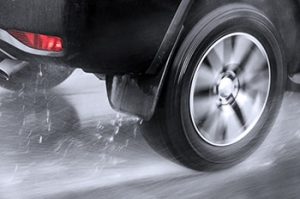Los Angeles Cash For Cars
We Take The Hassle Out of Selling Your Car
Home » Car Care Blog » Why does a car hydroplane and what to do when it does
Hydroplaning: Why It Happens and How to Stay in Control

In an instant. One moment you’re cruising along, and the next your car starts to skid like it’s lost all grip. That’s hydroplaning—a sudden and scary loss of control caused by water between your tires and the road. In this guide, you’ll learn exactly why it happens, how to handle it safely, and what you can do to prevent it before it happens.
What Is Hydroplaning?
What Does Hydroplaning Feel Like?
What to Do When It Happens
How to Prevent Hydroplaning
Preventing hydroplaning starts with preparation—especially when rain is in the forecast. Proper tire maintenance is your first line of defense. Make sure your tires are not overly worn. A simple penny test can help: insert a penny into the tread with Lincoln’s head upside down. If you can see the top of his head, the tread is too low and the tire should be replaced. Equally important is tire pressure. Underinflated tires don’t maintain their shape properly, leading to uneven water displacement. Overinflated tires reduce the contact patch on the road, making it easier to lose grip.
Driving habits also matter. Reduce your speed on wet roads—especially during the first 10–15 minutes of a rainstorm, when oil and debris are most slippery. Avoid driving through puddles or pooling water where possible. If you’re on a multi-lane road, try to drive in the tracks left by the vehicles in front of you; they’ve already displaced some of the water, making it safer for you to follow.
Another tip: avoid using cruise control in wet conditions. If your car begins to hydroplane while cruise control is on, it can take longer for you to react, and the system may continue to apply throttle, worsening the skid.
Final Thoughts
Hydroplaning is a natural hazard when driving in wet weather, but it’s not inevitable. With good tires, smart driving habits, and quick thinking, you can dramatically reduce the risk—or recover safely when it happens. Knowing what to do in those critical seconds could save your car—or your life.
At Los Angeles Cash for Cars, we buy cars in running driving condition — even if the check engine light is on. We service, Venice, Santa Monica, Marina del Rey, Culver City, Beverly Hills, El Segundo, and Manhattan Beach. We make cash offers on running and driving, cars, trucks, SUVs, and classics.
Call (310) 893-0162 for a free quote and same-day cash offer.
